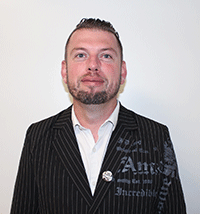

Water and wastewater enterprises have recognised that the industry’s business model needs to become more circular, resilient and sustainable. The water industry currently consumes 7% of the world’s energy, directly contributing around 1% of industrial greenhouse gas (GHG) emissions for Europe and anywhere from 3% to 10% globally.
Today, only 3% of the water on earth is said to be ‘fresh’. Moreover, only 0,5-1% of the earth's fresh water is available, ie, not locked in ice caps, the atmosphere or soil. Yet it is often used in an unsustainable manner, which is a crucial issue for the future.
Driven by the need to ensure water quality and realising that water is becoming an increasingly precious resource, the sector has begun to embrace and accelerate its digitalisation journey. At Schneider Electric, we believe the time has come to make significant enhancements and progress in the sector by embracing universal automation to drive the next level of sustainable water operations.
Through continuous development, industrial automation is now harnessing the IIoT and people working in plants, creating additional value to achieve higher opex efficiency through digitalisation. So how does this translate to water and wastewater operations? These plants rely heavily on a pool of experienced workers who ensure operations run smoothly and safely whilst continuing to generate output that meets requisite regulations.
With the above in mind, controlling opex within water and wastewater environments presents its own set of challenges. Across the globe, including South Africa, an alarming amount of existing water and wastewater infrastructure is nearing the end of its lifecycle. The reality is that as physical assets age, so do maintenance costs and the instances of downtime, which all contribute to rising opex.
Unfortunately, like many other industrial plants, maintenance is often reactive; when equipment does break, it becomes a mad scramble to find support and the right spare parts to get operations up and running again. This is compounded by skills transfer, or lack thereof. Many utility employees will be eligible to retire within the foreseeable future. Skills transfer is therefore paramount; mechanisms must be put in place to preserve these employees’ expertise, capture their knowledge and share it with the next generation of employees.
Workforce empowerment is about more than technology. Empowered workers use their skills and knowledge to improve the way the operation works. Here, technology is a tool which reduces non value-added work, leverages past experience and helps workers engage more effectively with the business of improving the way the plant runs.
Digital transformation can play a major role in reshaping water and wastewater workforce capabilities.
Addressing this age-old conundrum
An ageing workforce and infrastructure, along with current cost control measures, require quick and decisive action. For one, workers should be provided with the tools to efficiently make operational decisions. Fortunately, technologies such as IIoT and artificial intelligence (AI) provide very real solutions and the opportunity for the water and wastewater industry to address its ageing infrastructure and workforce.
The proper implementation of digitalised solutions can both address operational costs and some key workforce evolution issues:
• It can enhance knowledge retention and provide more flexibility when managing a changing workforce; a crucial part of the modernisation puzzle which requires careful consideration.
• Digital technologies attract new employees and assist in training these new recruits. These tools enable plants to capture the knowledge of the more experienced workers to ensure it can be shared with the new generation of incoming workers.
• Digitalisation can also support ageing infrastructure. Many of these technologies have been designed to operate within open architectures, which allows for quick integration into existing infrastructures. This avoids costly forklift projects in order to achieve modernisation and the corresponding operational benefits.
Modernising infrastructure
As mentioned, the modernisation of existing, ageing infrastructure can overcome a myriad of challenges. However, to do so, the gradual redesign of how data is captured must first be addressed. Once this is achieved, cloud-based services and enhanced connectivity of devices will be able to offer new, more affordable opportunities for optimised asset performance improvement by combining the growing wealth of data with advanced analytics.
Plants will also be able to measure and control reliability risk in real time. Furthermore, plant performance managers and operators will be able to adjust setpoints and visualise, again in real time, the impact their adjustments have on both processes and opex savings.
In the end, the water and wastewater industry will feature digitalised environments that not only save on opex but realise a skilled, futureproofed workforce.
| Tel: | +27 11 254 6400 |
| Email: | [email protected] |
| www: | www.se.com/za/en/ |
| Articles: | More information and articles about Schneider Electric South Africa |

© Technews Publishing (Pty) Ltd | All Rights Reserved